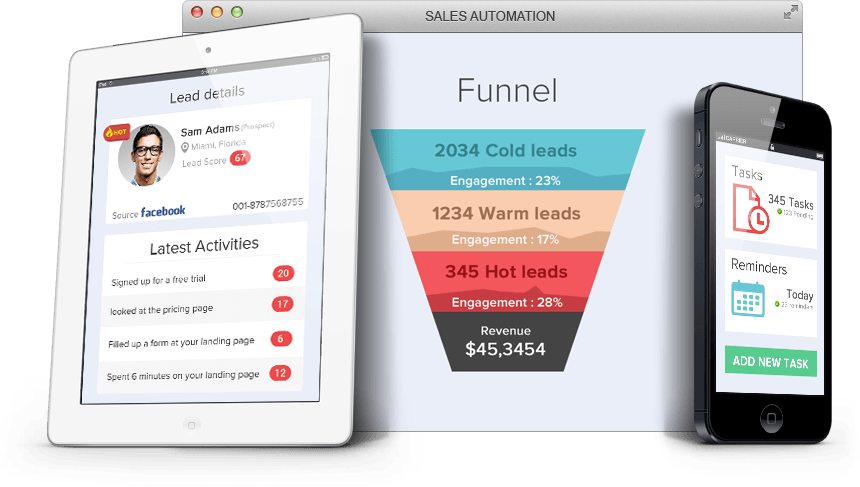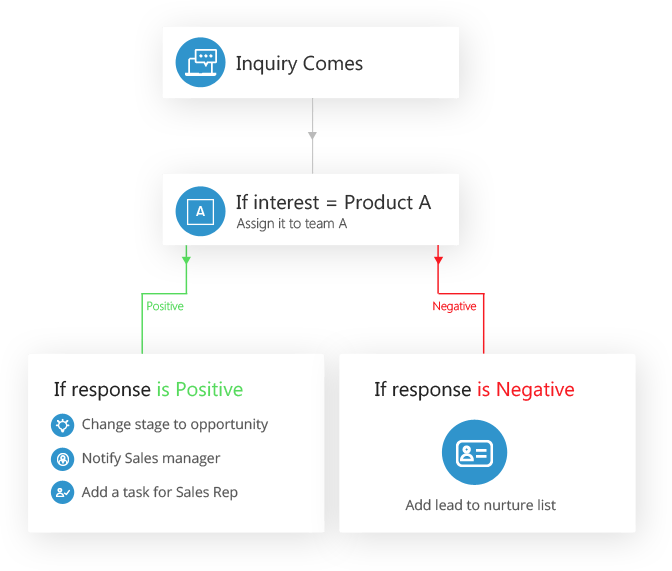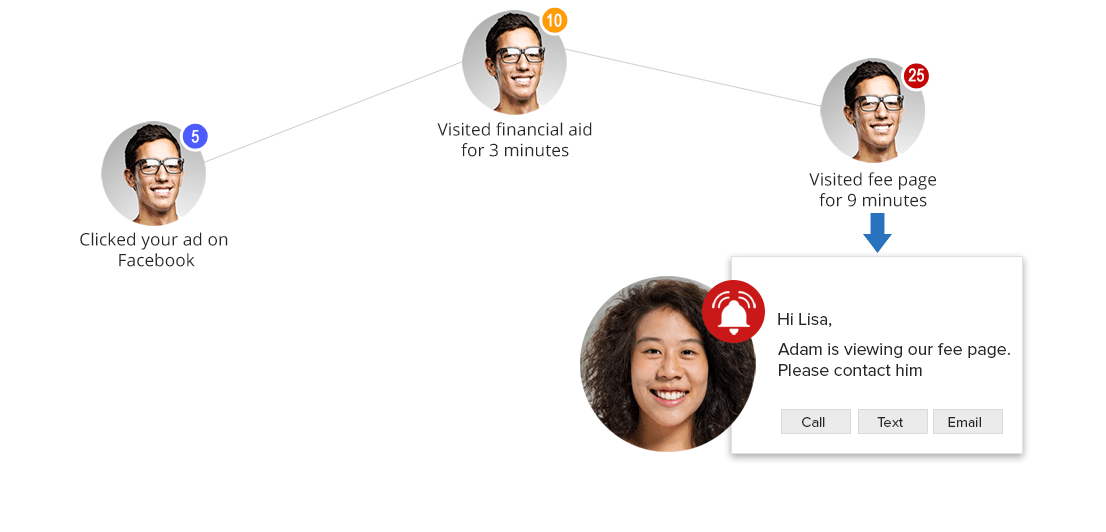Every business needs sales to survive but getting those sales isn’t always as easy as you’d like. Sometimes it seems that getting leads is the easy part, but turning them into paying customers takes far longer and much more effort than you would like it to. You only have the same amount of time during the day as everyone else, so it pays to make the most of it and use your time for the most optimal tasks.

By using a sales automation tool you can dramatically reduce the amount of time you spend performing repetitive tasks that you don’t need to do manually, thereby increasing the amount of time you can spend doing the things that really matter.
The Sales Process
Every business will have a sales process that they follow, be it consciously or unconsciously. A word of advice – if your sales process is not a conscious one, now is the time to write it down!
Your process will most likely be based on receiving inquiries from leads or potential customers. They will ask about a particular product or a service, and you will assign a sales team or a team member to respond to the query, as said team/team member specializes in that product or service.
The team will establish how interested the lead is, and either progress the lead through the sales process to the very end or alternatively take their details to contact them in the future as they may be interested in something else.
This can take quite a lot of time, as every query is coming from an essentially unqualified lead. The team or team member must go through the process of establishing the needs of the lead, and walking them through to the point of sale. If they are only testing the water, then the sale won’t be closed.
Surely there must be a better way?
The Sales Automation Process
Leads can be generated in a number of ways, The first thing you need is an automated process which gets all your online and offline leads at one place, without manually doing it. This can be done via lead capture automation

After capturing the leads, you’d like the inquiry to go to a relevant salesperson. By setting up lead distribution, you can define a logic which distributes the leads based on zip code, city, state, the product of interest, closest salesperson or any other criteria you like.
The third step could be the notifications- to the leads and the salesperson
Details of whatever product or service the lead is asking can automatically be sent to the lead via email with a link in the email suggesting that the lead clicks for more information and pricing.
Upon clicking the link, the lead has partially self-qualified and has become a sales opportunity. At this stage, a sales representative is notified and can continue the process with the lead.
The sales rep knows the product that the lead is interested in and knows that it is a strong interest – they would not have progressed so far through the automated system if it were not.
Further Automation of Sales
You don’t just have to pass the lead on to the next sales rep available – some sales reps might have specialist skills or knowledge that would benefit particular leads, or even just cover particular geographic locations. The automation process can include rules to pick the best sales rep for the job based on almost any criteria, including the method by which the lead was generated.
The ultimate in automation comes when each team member has a list of tasks to complete. Sales reps and managers will no doubt be used to adding items to the list, but this can be automated too – when the lead first comes in, the sales rep can have a task added instructing them to get in touch with the lead. If a call comes in and is missed, or a message arrives and isn’t dealt with, a task can be added to remind the rep to chase it up.

Notifications and alerts can be configured so that as well as adding a task, the sales rep can be alerted that something needs doing. If something was meant to be done and hasn’t been, someone higher up the chain (e.g. a manager) can be alerted to make sure the sales rep is doing what they are supposed to.
Notifications are especially helpful for letting managers know sales have been made, and for keeping sales reps on track in the follow-up process after a sale.
Prioritize Leads
Not all leads are the same, and some will progress faster and convert more easily than others. A sales automation tool will allow you to set criteria to automatically prioritize leads.
By performing particular actions (which of course you can be notified about) a lead can be scored to see how likely they are to become a paying customer. Add into this the ability to define your ideal customer and see how well they match that ideal, and you have a system in place that can identify the best lead to follow up next.
If you can follow up the leads that are most likely to convert as a priority, your sales figures are bound to improve. Spending hours working on a lead that you stand no chance of converting is a waste of time, especially if you can easily identify a better alternative – automatically.
The Difference Between a Sales Automation Tool and CRM
CRM handles various processes, and sales automation is one of them. Usually, CRM software allows you to keep track of all of your customers and leads, but you must manually update the data. You need to run reports, check information, evaluate the quality of leads and the performance of sales reps – all of which takes valuable time.
A smart CRM with automation engine can make the life easier for you. Reports are generated automatically and can be emailed to you, lead quality is automatically checked, and the most promising leads are assigned to the most appropriate sales rep, and the best sales reps can be spotted without any input from the manager.
Times and types of contact are automatically stored, actions the lead has taken are added to their individual record, and nothing is missed out by a forgetful user – everything happens automatically.
The first step to a better sales process is definitely a CRM software, but for maximum efficiency and visibility into your sales process, an execution-oriented CRM is the best bet.







